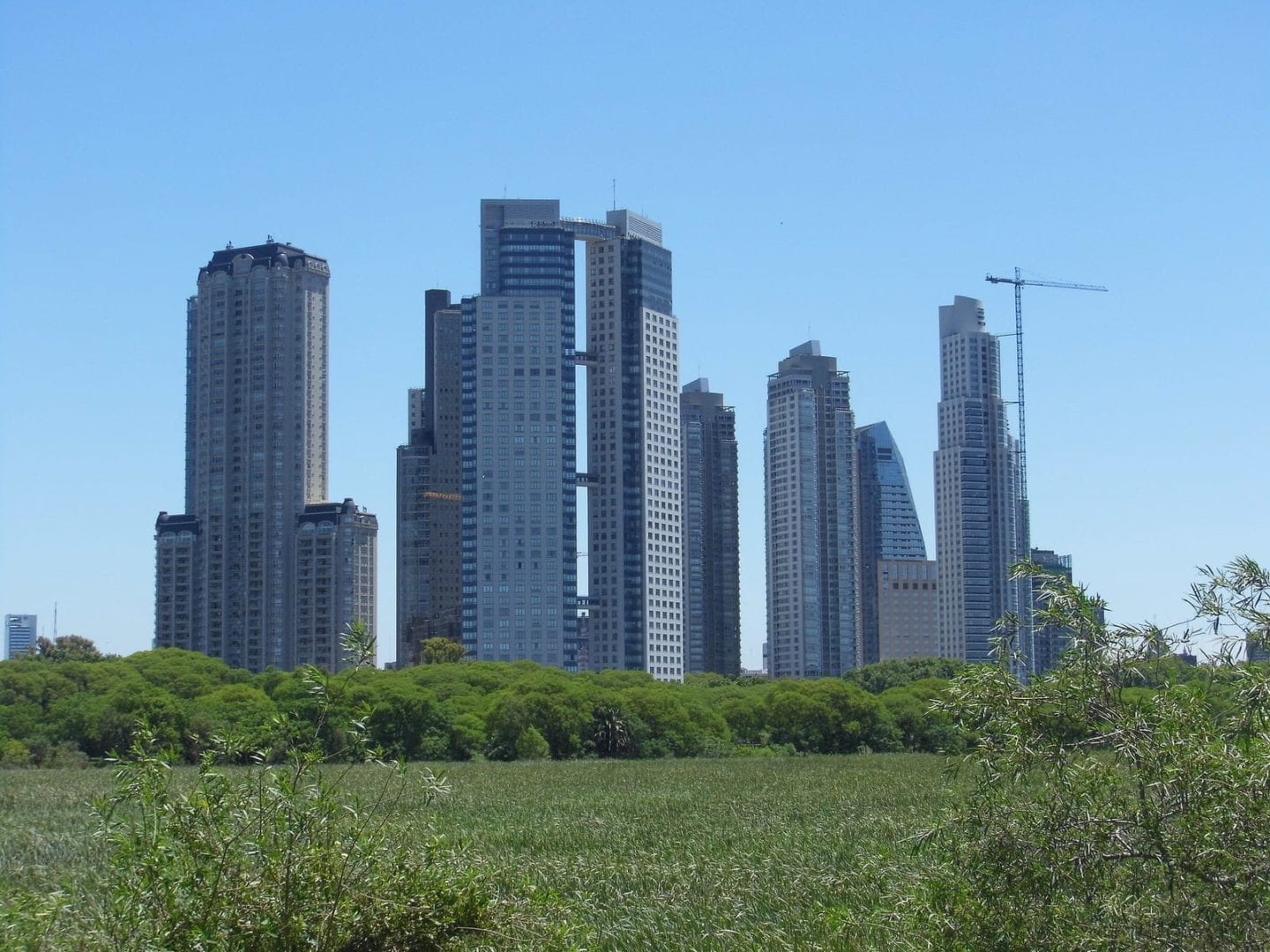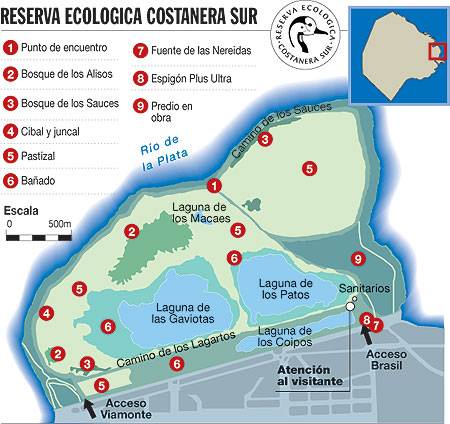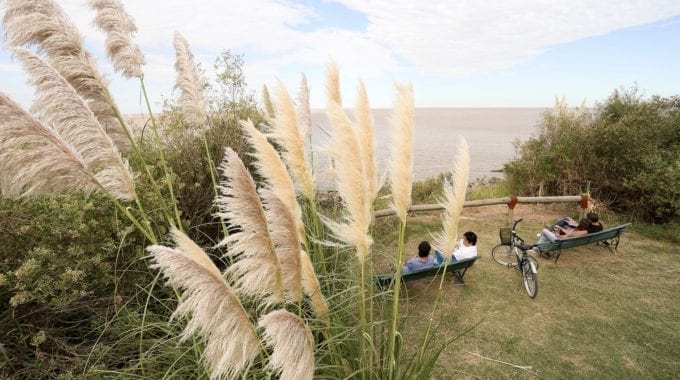Discovering the Ecological Reserve in Buenos Aires, Costanera Sur, Puerto Madero.
Before my arrival in Buenos Aires, I have fanatically studied the map, in order to more or less familiarize myself with the layout of the city, with what to expect, where various suburbs and areas were located, and in general, to not look so much like a tourist when I finally arrived. And so, with my supposed knowledge of the terrain of the city obtained from Google Maps, I have landed at the airport, that was near the beach, as far as I could remember. Or was it? Those are the first two, but not the last surprises that have sprung up on me during my stay in the city. The first, is that the airport I’ve looked at on the map, the Jorge Newberry, the one by the beach, is actually for domestic flights only, and my hopes of ending up really close to the center downtown were crushed when I realized that the one I was at, Ezeiza, is about a two hour drive from the city. The second is about that beach… Turns out there are absolutely no beaches in Buenos Aires, of any kind. Oh Google Maps…Well, it has the river, Rio de La Plata, but it’s not the same thing. So on a cheerful Monday morning, I woke up, ready to go and explore this watery area. After a few hours of walking around, I have stumbled upon mighty gates, which were closed and barred, with a gang of security watching on. The sign near to the door read “Reserva Ecológica Costanera Sur”. Closed on Mondays, I was also able to read in tiny letters. And Monday just happened to be this very day. Oh well, I thought, I can always come back tomorrow. And I left, but not before grabbing a choripan for the go.
As I approached the next day, the same gate was wide open, and there were security guards suspiciously hanging out at the entrance. I have managed to pass by them with a nod and a curt ‘hello’. Upon entering the reserve, it felt in actuality as though I was leaving the noisy Buenos Aires city far behind me. The horns sounded by the cars, and loud trucks passing by to the port, and general city buzz, all gone and replaced with a calm ambiance of birds, frogs, and trees. Now my goal was to finally find this river I have mistaken for a beach when, what now feels like an age ago, I was exploring on Google Maps. And so, I set off along the path in the direction I thought it should be in. There is something majestic about the flora in the reserve, as the trees that often stand back to back are of completely different type. At one point, situated in the depth of the wetlands, a palm tree standing next to a pine tree, also known as Christmas tree, which felt a bit rare and majestic.

The sights of natural beauty around me were interrupted by a suspicious sign that came into vision. Alligators, it said. Right there, on the fence, behind which were what looked like a wild swamp jungle looking alligator hideouts. Of course, it was most likely a joke, but for the remainder of my stay there, I rejoiced the idea that somewhere out there, alligators might be watching. It added a certain sense of thrill to the journey.
Start your Spanish Classes Online or Come to Study Spanish in Malaga
And at last, the river made itself seen as the distance closed on, the one that has so deftly tricked me into believing one could swim in Buenos Aires. It was sure vast enough to seem like a sea, but the waves were virtually non-existent, save for the tiny ripples spread by an occasional duck ducking its head underwater. And no alligators whatsoever. But while swimming was virtually impossible in these waters, another grand sense of vastness lingered here. In addition to being as huge a river as they come, there was a ship coming my way. A giant frigate, with what seemed to be thousands upon thousands of shipping containers, with various marks and brands menacingly printed upon them, and the red flag of China flapping behind the stern, was heading towards the docks. There was not a sound on the shore where I stood, nor in the water. This huge galleon traversed the waters of Rio de La Plata in perfect silence. It was close enough to the shore to make out the crew members’ faces, but there was not a sound. Just the gigantic presence of this enormous Chinese vessel. Just imagine this for a second, and feel the immensity of this scene.This is Rio de La Plata, I thought. I came in, disappointed that there was no beach, but then again, this scene cannot really be replicated on the beach, as I now understood. This perfect harmony between our industrial progression and the nature that facilitates it, all in perfect silence save for that of the occasional bird flying by, as all of the surroundings were dwarfed by this gigantic freight hauler. I left the Reserva in the evening, just before closure, feeling deeply satisfied. But not before grabbing a choripan on my way home.
Ecological Reserve Map

A Deeper Dive into the Reserve’s Biodiversity
Beyond the awe-inspiring vision of the giant ships, Reserva Ecológica Costanera Sur holds a plethora of ecological treasures within its embrace. It’s not just about the potential alligators lurking in its waters or the massive trees that paint a contrasting picture against each other. The reserve is a testament to Buenos Aires’ commitment to preserving natural habitats in the midst of urban sprawl.
Birds and Winged Wonders
The reserve is a haven for birdwatchers. Over 200 species of birds have been recorded here, making it a popular spot for ornithologists and nature enthusiasts alike. From the vibrant Vermilion Flycatcher to the majestic Great Egret, the sky and trees are dotted with avian wonders. During spring and fall, the reserve becomes a transient home for migratory birds, making the experience even more enriching.
Small Mammals and Rodents
While the alligators might be a myth, the reserve is home to various small mammals. It’s not uncommon to spot coypus, a large rodent species, near the water bodies. Their dense fur and webbed feet make them proficient swimmers, often mistaken for small beavers or giant rats.
Flora that Tells a Story
The flora in the reserve is a blend of native and introduced species. While walking the trails, one can come across ceibo trees, Argentina’s national tree, flaunting its bright red flowers. The marshlands, on the other hand, are dominated by bulrushes and cattails, providing a perfect habitat for the reserve’s aquatic life.
The Human Connection
But the reserve isn’t just about nature. It’s about the people who visit it too. Joggers, families on picnics, photographers trying to capture the perfect shot, and even meditation groups can be seen immersing themselves in the serenity the place offers. The juxtaposition of the city’s hustle and bustle and the reserve’s tranquillity is a reminder of how vital such green spaces are in urban environments.
A Day’s End at the Reserve
As the day draws to a close, the reserve paints a picture of ethereal beauty. The setting sun casts a golden hue over the waters of Rio de La Plata, and the city’s skyline in the distance starts to light up, offering a contrasting backdrop to the natural beauty of the reserve. Sitting on one of the benches, taking in the sights and sounds, one can’t help but feel grateful for such an oasis in the heart of Buenos Aires.
In conclusion, Reserva Ecológica Costanera Sur offers more than just a break from city life. It offers lessons in ecology, a glimpse into the delicate balance of urban and natural environments, and most importantly, a chance to connect with nature in its purest form. Whether you’re a tourist or a local, a day spent here is a day well spent. So, the next time you’re in Buenos Aires, take a moment to explore this ecological gem and let nature surprise you.
For more information about La Reserva Ecológica contact Spanish Schools Buenos Aires our visit our website https://vamospanish.com Viamonte 1516 Clases de Ingles






